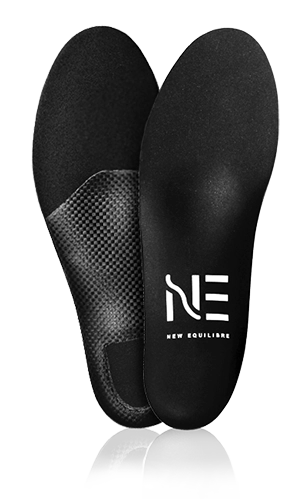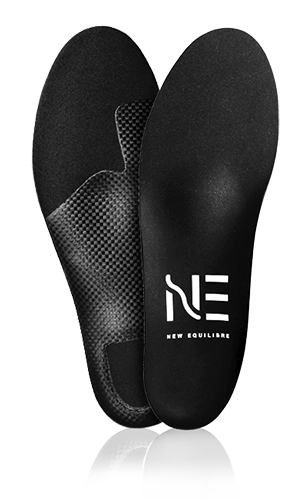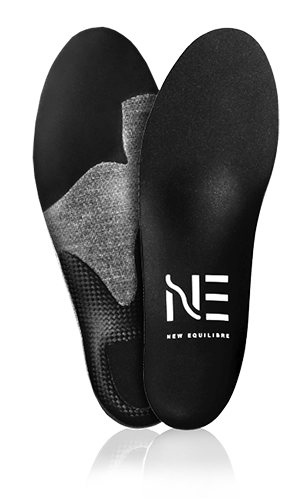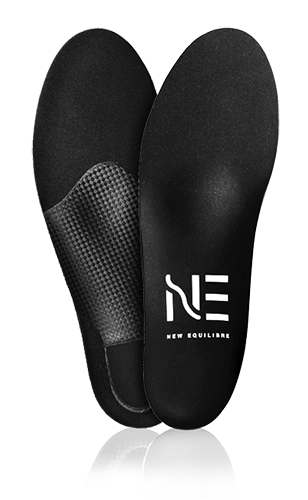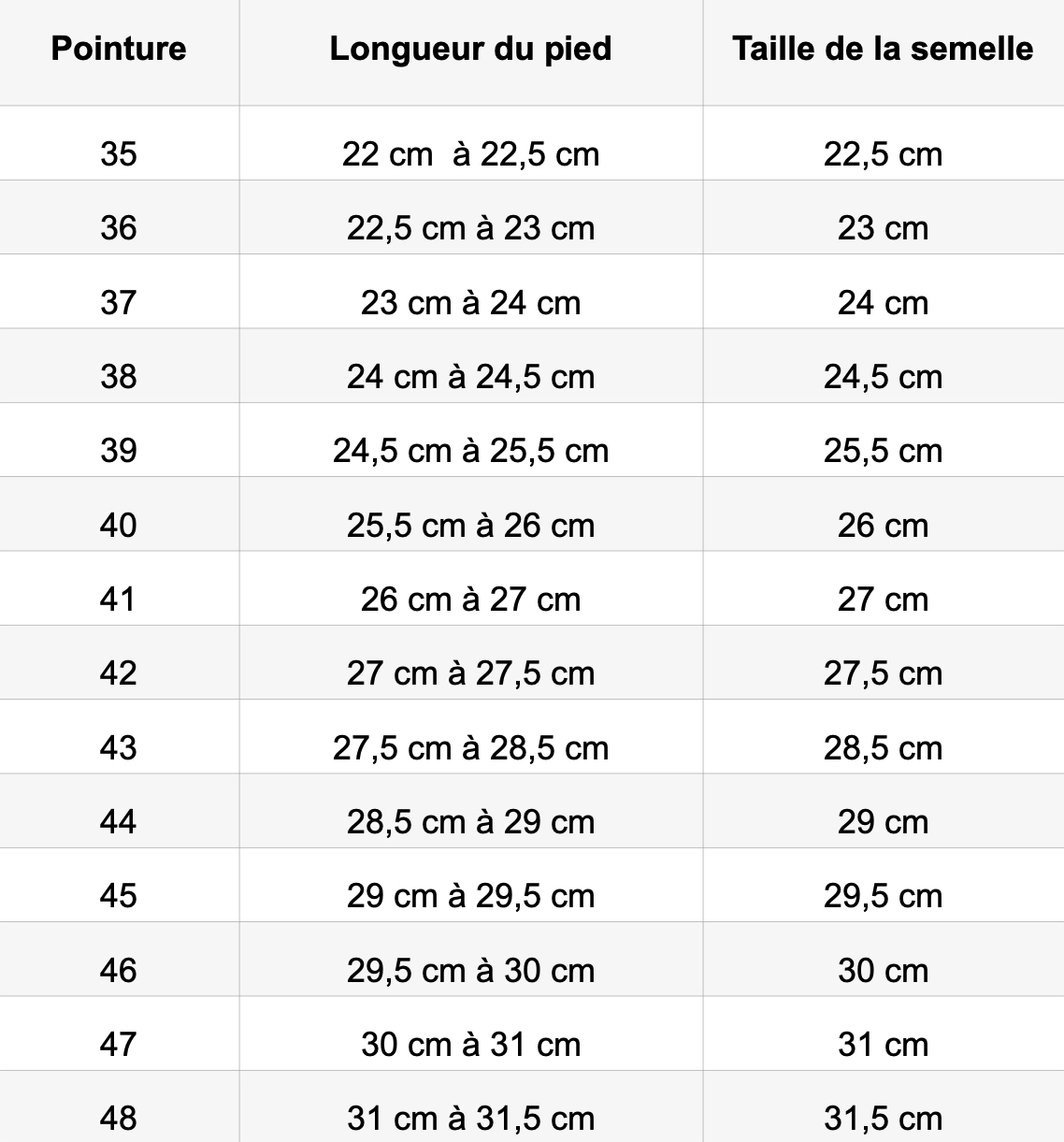Plantar fasciitis
Plantar aponeurosis
the complete guide
- Mis à jour le
- By New Equilibre
Plantar aponeurosis, also known as plantar fasciitis, is an inflammation of the fascia under the foot, often caused by excessive tension or repeated pressure. This condition manifests itself as a sharp pain in the heel area, particularly when taking your first steps in the morning or after a period of rest. Particularly at risk are runners, those wearing unsuitable footwear or those suffering from support disorders.
SUMMARY :

In this guide, discover solutions and products designed to relieve pressure on the foot and promote rapid healing. Whether you're looking for effective treatment or podiatric advice, you'll find everything you need to care for your muscles, tissues and ligaments. Choose well-being and rediscover the pleasure of walking without discomfort!
Vous souffrez de fasciite plantaire et pratiquez un sport ? Trouvez en un clic la solution adaptée :
What is plantar fasciitis?
Plantar fasciitis is a painful inflammation of the plantar fascia, a fibrous band under the foot that connects the heel to the toes. It is generally caused by repeated micro-tears due to excessive stress, such as running, prolonged standing or wearing unsuitable footwear.
The main symptoms include a sharp pain in the heel, often felt on waking or after a period of rest, then subsiding with activity. This condition is common among athletes, overweight people and those with poor posture.
If left untreated, plantar fasciitis can evolve into plantar aponeurosis, which can lead to the formation of a calcaneal spur, a painful bony protrusion under the heel. Treatment includes rest, stretching, orthopedic inserts and, in some cases, medical therapies.
What is plantar aponeurosis?
Plantar fasciitis is a chronic condition of the plantar fascia, characterized by progressive tissue degeneration rather than simple inflammation. Unlike plantar fasciitis, which is often acute and reversible, aponeurosis results from repeated stress on the plantar fascia, causing tissue thickening and loss of elasticity. Those most affected are those who put excessive strain on their arches, such as runners, overweight people or those wearing unsuitable footwear. The pain is similar to that of plantar fasciitis, but can become more persistent and resistant to conventional treatments. This pathology is often associated with the appearance of a calcaneal spur, a bone deposit resulting from prolonged traction on the heel bone. Treatment is based on orthopedic inserts, physical therapy and sometimes infiltrations.
This pathology is often associated with the appearance of a calcaneal spur, a bone deposit resulting from prolonged traction on the heel bone. Treatment is based on orthopedic inserts, physical therapy and sometimes infiltrations.
The 100% Made in France solution
Commandez vos semelles pour soulager l’aponévrosite plantaire en quelques clics via notre boutique en ligne !
Fast, free delivery to mainland France.
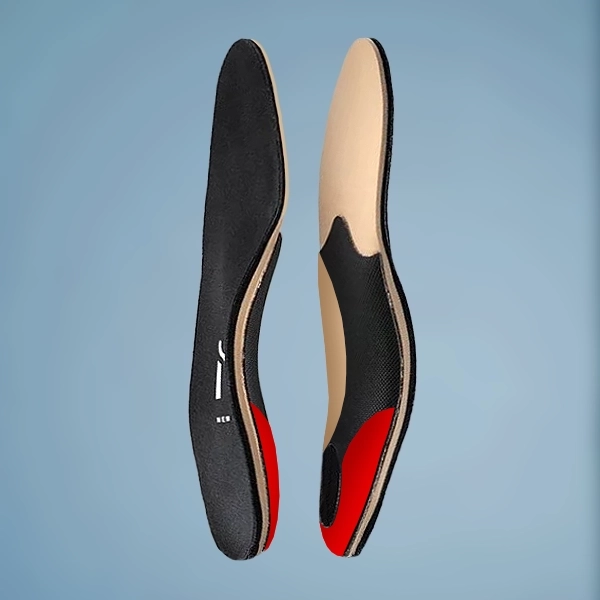
What are the symptoms of plantar aponeurosis?
Plantar aponeurosis causes heel pain. This pain is generally felt first thing in the morning, after getting out of bed. The pain may prevent the heel from touching the ground. They can become chronic if no treatment is started within 6 months of the onset of the first pains.
To diagnose aponeurosis, it is advisable to take an X-ray of the heel. This may reveal a thickening of the soft tissues in the heel area, as well as micro-calcifications. This examination can also rule out the presence of a tumour or fracture. For this reason, léchography is the most effective way of demonstrating thickening of the fascia. However, an MRI scan can provide a more precise diagnosis of the location.
Orthopedic insoles for plantar fasciitis :
The orthopedic insoles sont le traitement le plus efficace et le plus rapide pour soulager les douleurs liées à l’aponévrosite plantaire de manière naturelle, et sur le long terme.
Our New Equilibre Calcaneal Spur insoles are designed to provide effective relief from this condition. Their name, Épine Calcanéenne, is intended to guide people suffering from calcified or non-calcified plantar fasciitis towards this model adapted to this pathology.
Their thermoformed shape offers optimum support for your foot, supporting the medial, lateral and anterior plantar arches, helping to relieve inflammation quickly by limiting excessive tension and pressure. Designed with comfortable, shock-absorbing materials, they guarantee rapid relief for everyday use.
New Equilibre insoles have been tested and approved by thousands of users. It's easy to order your insoles exclusively from our online store, and regain the comfort your feet deserve.
Free delivery to mainland France, within 72 hours. Free returns within 14 days*.
Plantar aponeurosis is a very common pathology in sports, so discover all the New Equilibre insoles adapted to your activity for optimum effectiveness. They also offer the support needed to alleviate this pathology, while providing specific foot support features to suit your activity:
What causes plantar aponeurosis?
A morphological cause. The wrong axis of the stride can lead to excessive stress on the aponeurosis muscle.
Unsuitable sports practice. Running on ground that's too hard or degraded, or wearing unsuitable footwear, can lead to plantar fasciitis. Running with poor technique, downhill or on the forefoot is also a factor in plantar fasciitis. In some cases, a rupture of the plantar fascia can also occur.
How long does it take to heal plantar aponeurosis?
The healing time for plantar fasciitis varies considerably, depending on a number of factors. Generally, with effective treatment such as daily orthopedic insoles, pain can be relieved within a few days. However, with drug or physiotherapeutic treatments, most patients see a significant improvement in their symptoms within three to six months. In some cases, full recovery can take up to a year or more.
It is very important to note that healing is often gradual. Affected people generally begin to experience a reduction in pain before regaining full function of their foot. It is therefore essential to remain patient, to follow treatment rigorously and to wear orthopedic inserts on a daily basis.
How to treat plantar fasciitis?
Rest and Ice : Give your foot time to recover by avoiding activities that aggravate the pain. Apply ice to the painful area for 15 to 20 minutes several times a day to reduce inflammation.
Stretching: Gentle stretching of the plantar fascia and calf muscles can help improve flexibility and relieve tension. Perform these stretches regularly, especially in the morning.
Appropriate Shoes : Opt for shoes that offer good arch support and adequate cushioning. Orthopedic insoles can also help reduce pressure on the fascia.
Orthotics and Orthopedic Insoles : Orthopedic inserts to correct posture and weight distribution, relieving pressure on the fascia.
Physical therapy: A physiotherapist can guide you through specific exercises to strengthen foot muscles, improve mobility and promote healing.
Anti-inflammatories : Over-the-counter anti-inflammatory drugs can help reduce inflammation and ease pain.
Strapping : Special adhesive bandages can be used to support the plantar fascia and reduce tension during healing.
What kind of shoes can I wear with plantar fasciitis?
In general, it's important to choose comfortable shoes that offer good arch support, adequate cushioning and good stability to relieve plantar fasciitis symptoms. It is also advisable to avoid shoes that are too flat or have high heels, which can aggravate this condition.
- Cushioned running shoes: Opt for running shoes specially designed to absorb shock and provide good support for the arch of the foot. Look for models with an EVA foam or gel midsole for extra cushioning.
- Walking shoes : Choose walking shoes with good arch support and heel cushioning. Look for models with a thick, flexible outsole to reduce pressure on the plantar fascia.
- Orthopedic shoes : If you suffer from severe plantar fasciitis, you may want to consider custom-made orthopedic shoes. These shoes are specially designed for your foot and can offer optimal support and pain relief.
- Shoes with removable insoles : Opt for shoes with removable insoles so you can replace them with New Equilibre orthopedic insoles specially adapted to your activity to relieve plantar fasciitis.
- Shoes with good arch support: Look for shoes that offer good arch support to reduce tension on the plantar fascia. Shoes with gel or memory foam inserts can be particularly beneficial.
- Shoes with a slightly raised heel: Shoes with a slightly raised heel can help reduce tension on the plantar fascia by promoting a more neutral foot position.

New Equilibre
Healthcare professionals specializing in the design and manufacture of orthopedic insoles for over 35 years. Experts in lower limb care, our orthopedists design New Equilibre insoles in our laboratories in the south of France. Every year, thousands of users and patients in clinics place their trust in New Equilibre's expertise.

